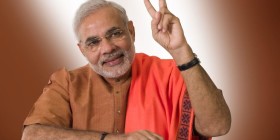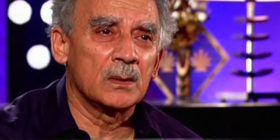Let’s begin with two questions.
One, if Raghuram Rajan didn’t approve of demonetisation “at any point during his term”, how did the government claim it got the Reserve Bank of India (RBI) on board some six months before the launch to start preparations for the massively disruptive exercise in the economy? Rajan left the RBI on 4 September 2016 and demonetisation was announced just two months later, on 8 November 2016.
Two, if the RBI, under Rajan, had duly warned the government that short-term costs of the move could outweigh the long-term benefits, particularly if not executed well, and there are alternative ways to achieve this objective, then why did the government still go ahead with the plan ignoring the advice from the monetary authority and custodian of currency, in an economy where growth hadn’t taken a firm hold yet? In hindsight, we all know that the government and RBI miserably failed to plan it properly.
The immediate context of these two questions is the revelations by Rajan in his new book, titled I Do What I Do: On Reforms Rhetoric and Resolve and through his interviews to media in this context. In an interview to The Times of India, Rajan said although RBI was consulted, at no point during his term was it asked to take a decision on demonetisation.
Answers to these questions are even more critical after 10 months of demonetisation, wherein 86 percent of currency was nullified in a few hours through a televised announcement by Prime Minister Narendra Modi. As per the recent annual report of RBI, about 99 percent of the demonetised notes have come back to the banking system. That is Rs 15.28 trillion of the Rs 15.44 lakh crore of the total demonetised currency. Only a little over Rs 16,000 crore of Rs 15.44 lakh crore has not returned. Still, this is not the final number. The RBI is yet to count old notes received by cooperative banks and those deposited by citizens and institutions of Nepal. Once this exercise is over, the final tally won’t be far from the 100 percent mark.
The monetary cost of printing new currency for RBI has escalated to Rs 7,965 crore, more than double compared with Rs 3,421 crore in the previous year. The number of counterfeit notes or fake notes detected during the exercise is only minuscule, just about 7.6 lakh pieces. The cost of printing new currency and the interest paid on reverse repo operations to suck out the excess liquidity in the banking system post demonetisation have contributed to a sharp fall in the RBI’s earnings and its dividend transfer to the government, which fell by half to Rs 30,659 crore from Rs 65,876 crore last year and against an expected target of Rs 74,901 crore.
All in all, the tangible costs of demonetisation has far exceeded the gains, so far. The government had initially expected about Rs 3 lakh crore to Rs 4 lakh crore of currency would not come back to the system and this will be a windfall gain. But, it didn’t happen. The economy has paid a heavy price for this exercise, with GDP falling to 6.1 percent in the March quarter and further to 5.7 percent in the June quarter. There are reports of major job losses in informal sector. Even the right-wing labour unions have accused the Modi-government for destroying jobs with the ill-prepared demonetisation move.
There are claims and counter claims about the stated objectives of demonetisation after 10 months. There were three main objectives to it in the beginning before the government began shifting the goal posts after each stage. These were fighting black money, cash-based corruption and terror funding. And later the objectives of digital-shift and cashless economy were added when Modi spoke about this in his Mann ki Baat programme. Subsequently, much stress was given to mainstreaming of money and expanding the tax base as the major victories of demonetisation.
There aren’t any solid evidences of demonetisation achieving any of these objectives contrary to the government’s claims. There was a spike in digital transactions post demonetisation when cash was not available in the system and now it has come back to the “trend growth line”, data suggests that tax payer base might have gone up on account of note ban and how many of these will actually contribute to higher tax revenue is debatable. Clearly, corruption and terror funding have not been impacted much due to note ban.
As far as black money is concerned, the only way demonetisation can be salvaged now is when taxman unearths substantial amount of illicit money from the money deposited in bank accounts post demonetisation. But, here, Rajan cautions. “The government can investigate the deposits, and some of it may turn out to be black money but it does imply that a greater effort is required and could also mean – and this is something a number of commentators have pointed out – more harassment for the general public that has honestly deposited money that was lying for one reason or the other in various accounts. So that benefit – if it comes – let us see at what cost it comes.”
If one looks at the record of India’s corrupt, under-equipped tax department, the rate of success in the battle against tax cheats aren’t very encouraging. The government and taxmen will have to work hard to change this record. But, as Rajan cautioned, giving a free hand to taxmen and pushing them for targets could also lead to harassment of even legitimate depositors. The government needs to be careful not to let this happen. The gains of demonetisation on black money continue to be uncertain.
But, the moot question here is this: If the RBI didn’t approve of demonetisation until 5 September and warned about its likely damaging effects on economy, then why did the government go for this dangerous gambit? Was it worth the pain for common man and the economy? And more importantly, if the government hasn’t still learned any lesson from the demonetisation episode (finance minister Arun Jaitley believes the exercise has achieved its objectives) and is confident that it didn’t hurt the political prospects (evident from UP polls), will it go for similar gambles yet again in the economy? Rajan’s revelations only raise more uncomfortable questions.
In hindsight, it is quite clear now that Modi would have done well listening to Rajan on demonetisation.






Leave a reply